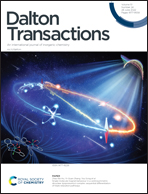Coupling effect between hole storage and interfacial charge transfer over ultrathin CoPi-modified hematite photoanodes†
Abstract
Understanding the functionality of the modification layer in regulating the charge transfer process at the semiconductor/electrolyte interface is of great significance to the rational design of photoelectrocatalytic water oxidation systems. Herein, by systematically investigating and comparing the charge transfer kinetics behaviors over ferrihydrite (Fh)- and cobalt phosphate (CoPi)-modified hematite (Fe2O3) photoanodes, we unveiled the essential relation between photocurrent enhancement and the charge transfer process. With the hole-storage material Fh as a reference, it was found that CoPi demonstrates high hole-storage capacity at a low bias region (<1.0 V vs. RHE) due to the effective release of Fermi level pinning. Afterwards, the stored holes would be timely injected into the electrolyte for water oxidation, caused by the enhanced charge separation in the presence of CoPi. In contrast, the decoration of Fh can only slightly passivate the surface states and promote hole injection in the high potential region. Subsequently, superior hole-storage capacity in the low-potential region is recognized as a crucial factor for photocurrent enhancement. These combined results provide new insights into the understanding of interfacial charge transfer kinetics.



 Please wait while we load your content...
Please wait while we load your content...